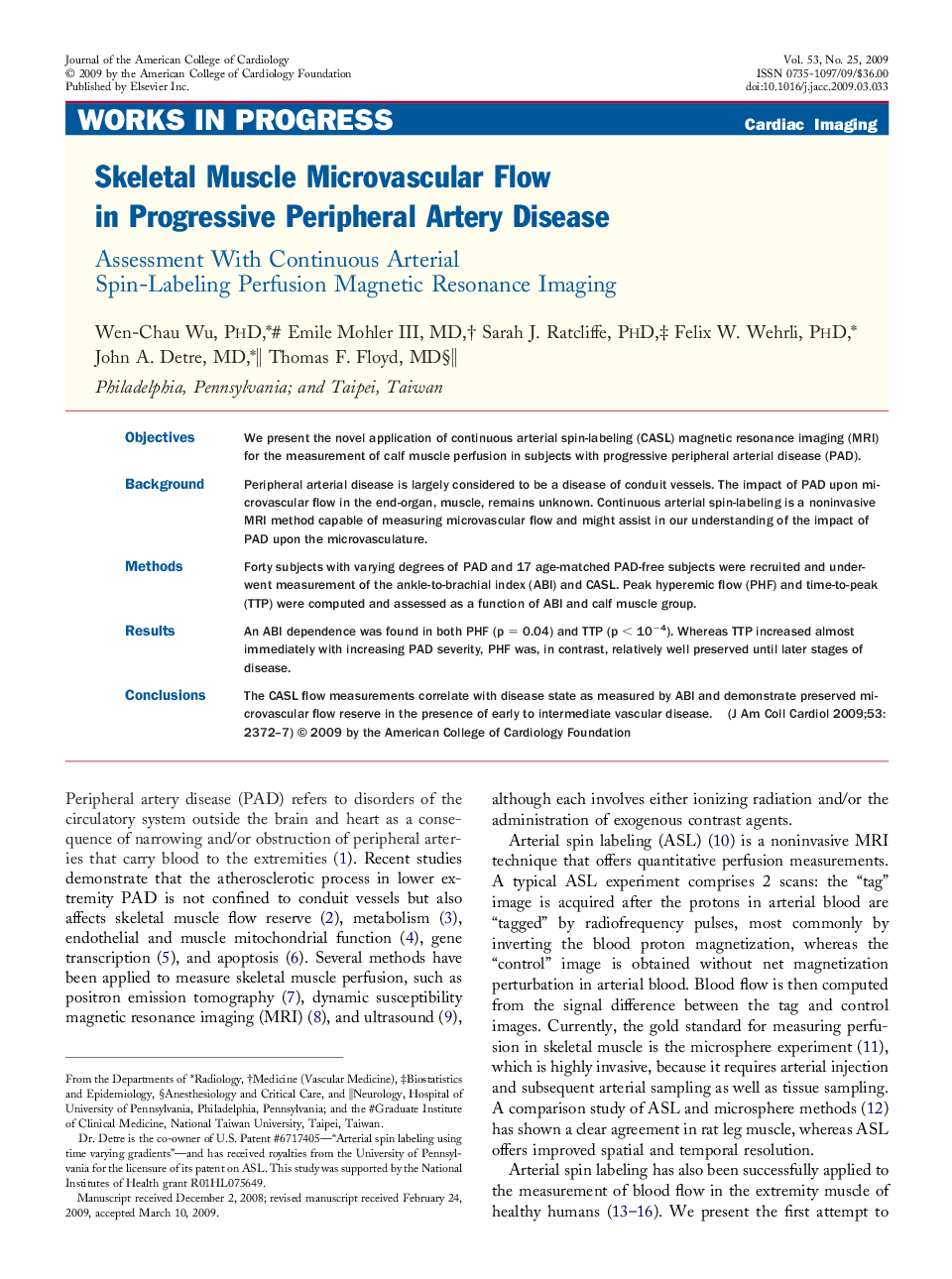| Article ID | Journal | Published Year | Pages | File Type |
|---|---|---|---|---|
| 2950956 | Journal of the American College of Cardiology | 2009 | 6 Pages |
ObjectivesWe present the novel application of continuous arterial spin-labeling (CASL) magnetic resonance imaging (MRI) for the measurement of calf muscle perfusion in subjects with progressive peripheral arterial disease (PAD).BackgroundPeripheral arterial disease is largely considered to be a disease of conduit vessels. The impact of PAD upon microvascular flow in the end-organ, muscle, remains unknown. Continuous arterial spin-labeling is a noninvasive MRI method capable of measuring microvascular flow and might assist in our understanding of the impact of PAD upon the microvasculature.MethodsForty subjects with varying degrees of PAD and 17 age-matched PAD-free subjects were recruited and underwent measurement of the ankle-to-brachial index (ABI) and CASL. Peak hyperemic flow (PHF) and time-to-peak (TTP) were computed and assessed as a function of ABI and calf muscle group.ResultsAn ABI dependence was found in both PHF (p = 0.04) and TTP (p < 10−4). Whereas TTP increased almost immediately with increasing PAD severity, PHF was, in contrast, relatively well preserved until later stages of disease.ConclusionsThe CASL flow measurements correlate with disease state as measured by ABI and demonstrate preserved microvascular flow reserve in the presence of early to intermediate vascular disease.
